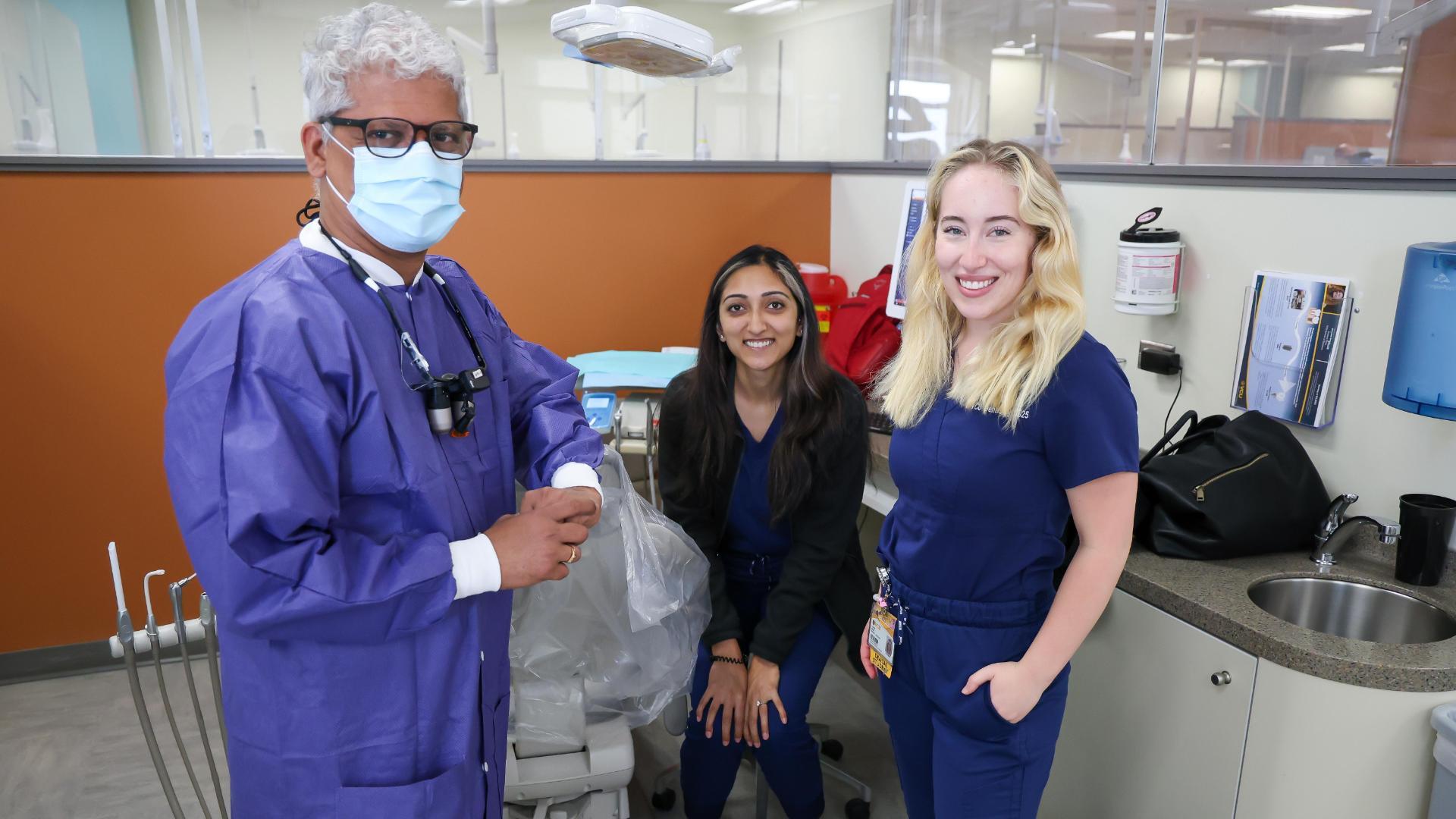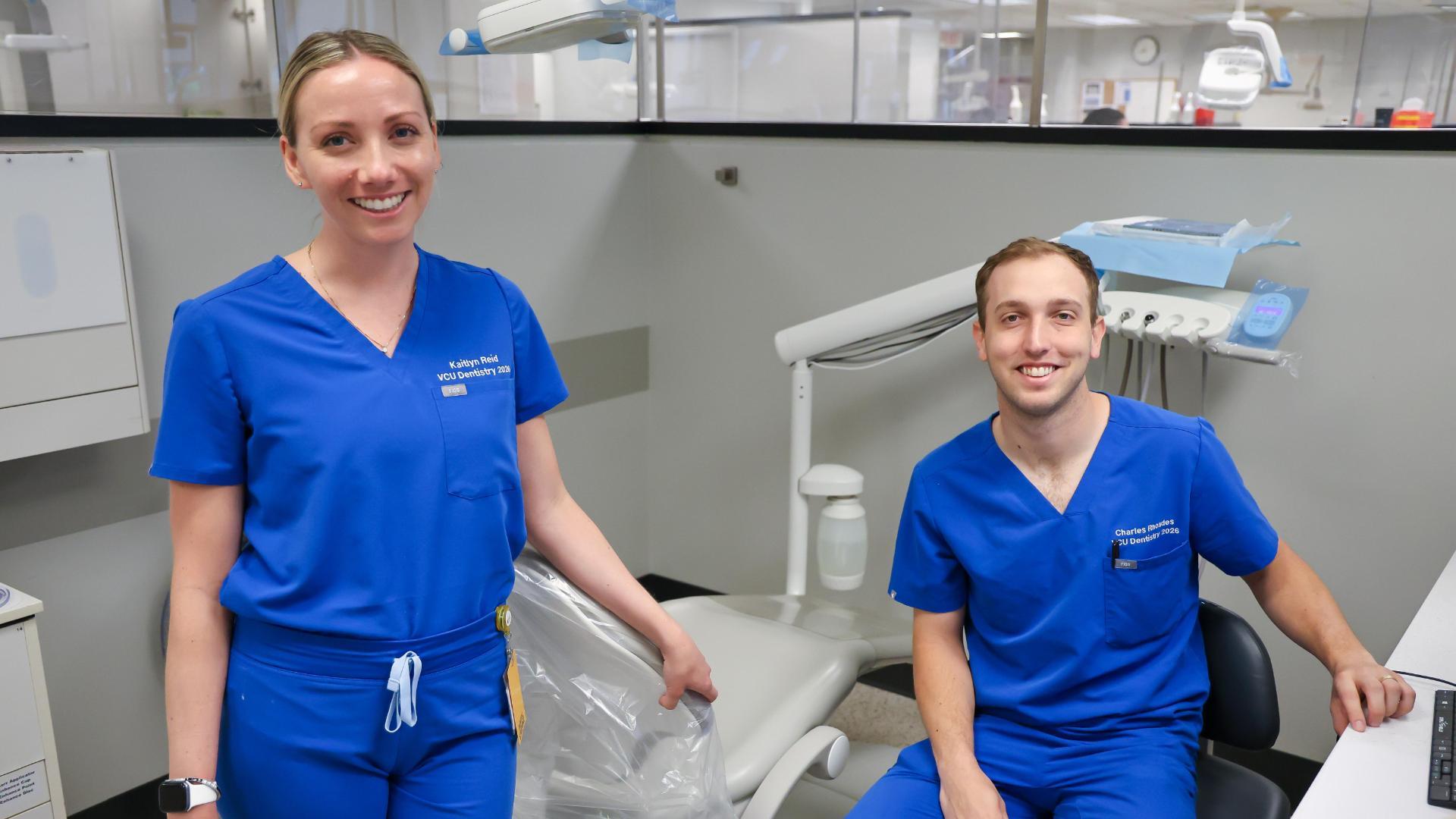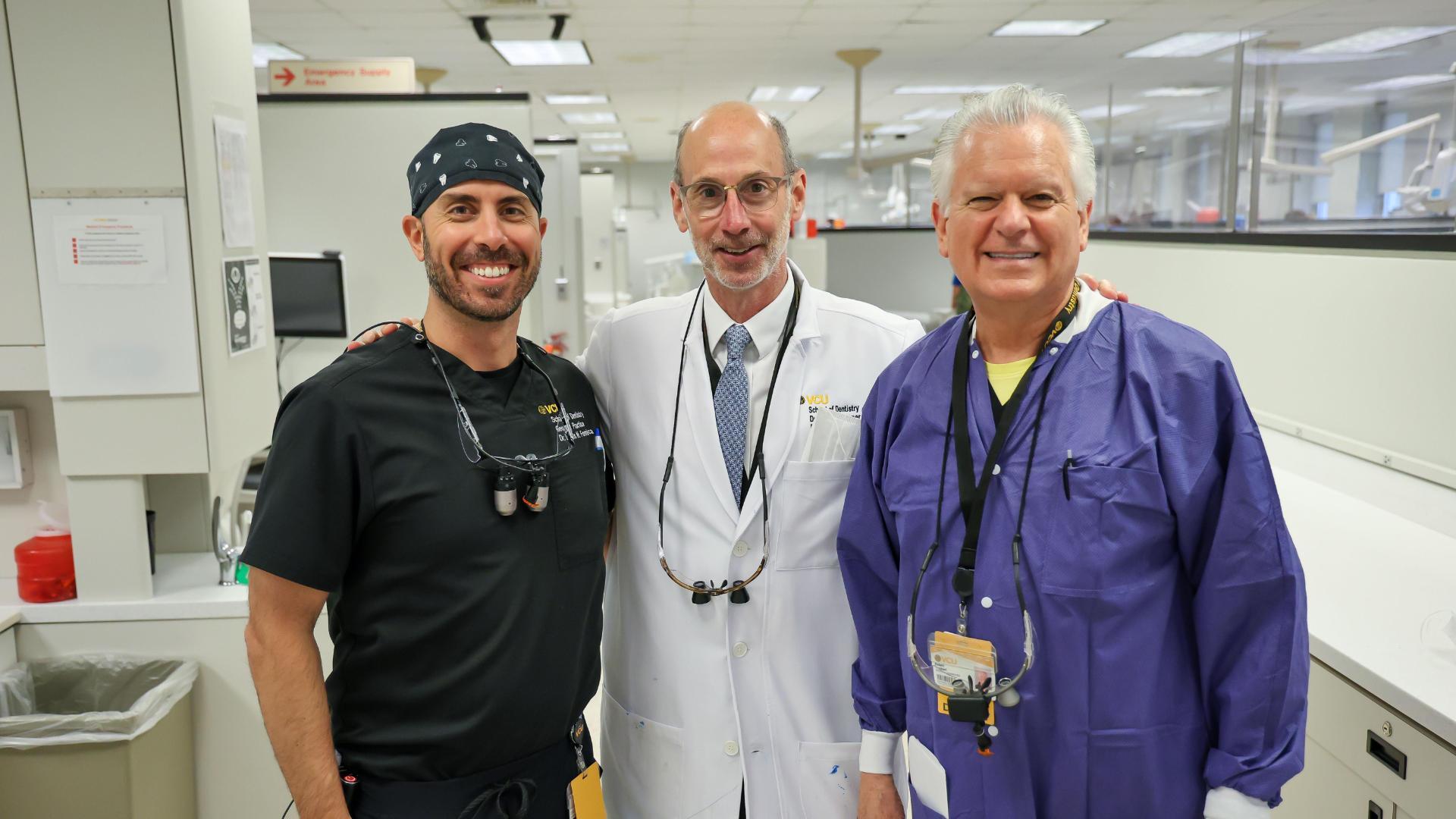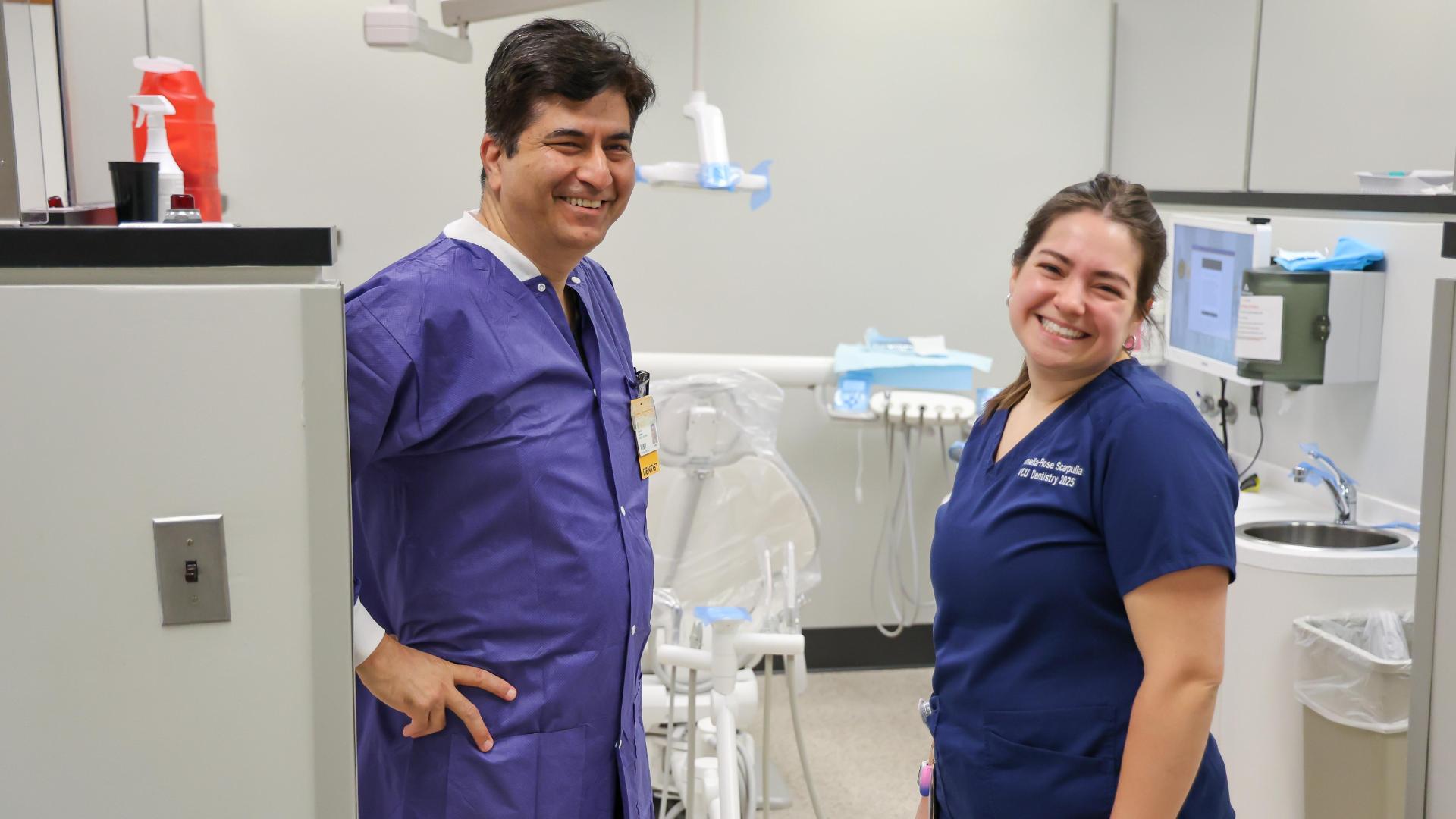 Changes to the General Practice groups will be implemented to enhance student success, improve patient experiences and increase access to care.
Changes to the General Practice groups will be implemented to enhance student success, improve patient experiences and increase access to care.New General Practice groups allow third-year dental students to climb while fourth-years can soar
As a new school year approaches and VCU School of Dentistry prepares to welcome its newest class, changes to the General Practice groups will be implemented to enhance student success, improve patient experiences and increase access to care.
The number of General Practice groups will be decreasing from eight to four. Groups will be combined and will be represented by color.
- Groups 1 and 2 will be Blue (GPGBLU)
- Groups 3 and 4 will be Gold (GPGGLD)
- Groups 5 and 6 will be Green (GPGGRN)
- Groups 7 and 8 will be Orange (GPGORA)
Eight group faculty leaders will remain, but join as teams, with one primarily mentoring the D3 class and the other mentoring the D4 class.

One intent of combining groups was to assure collaboration. Students will have the opportunity to learn from their classmates and form a “buddy system” within their groups.
Richard Archer, D.D.S., M.S., Senior Associate Dean of Clinical Affairs, assisted in creating the new structure.
“Working together as a team and growing together is a real strong point of their education,” Archer said. “However, a negative aspect of it was that with eight groups each with one leader, students were receiving different styles of education and experiences in the clinic. So by cutting that from eight to four, we are changing the way that group leaders work with their students. Everybody will be getting the same experience more or less and the opportunity to learn from different mentors.”
Despite these changes, Archer assures students that there will be minimal impacts to their dental school experience.
“We wanted to make the fewest possible changes while enhancing the experience and increasing the learning opportunities that students have.” Archer said.
The new structure will further integrate Prosthodontics into the students' education. Moving forward, the Douglas Clinic, located in the Perkinson Building, will also be better utilized for groups to treat patients.
“Prosthodontics used to have their own section, but now we are incorporating them into the groups so that they will be more involved with comprehensive care for patients and be able to work closer with group leaders,” Archer said.
This is part of an effort by Dean Lyndon Cooper, D.D.S., Ph.D., to streamline care received in our dental school.

“Our patients can experience improved care,” said Cooper. “Integrating our prosthodontic faculty into the group practice environment will enable point of care consultations without referral appointments. Our students’ education improves from having more full time faculty in one place.”
Dental hygiene students will have new opportunities. They will be practicing in a designated section of the Dental Building 1 predoctoral clinic with dedicated faculty mentors, rather than splitting into groups and moving around within the clinics. Dental hygiene students will also have increased opportunities to learn and practice screening exams, a valuable part of their education.
Not only will students have a more comprehensive experience, but so will patients.
“It’ll be a lot less moving around,” Archer affirmed. “They will be assigned to a group for treatment and be able to have consultations and treatments done in the same clinic by the same people.”

Another change with the new groups is that screenings will be offered to patients every day of the week rather than just on Wednesdays. This will benefit patients who have limited availability to visit the clinics and speed up their treatment process.
“I think there is always anxiety about change,” Archer said. “But it will be minimal and it will be an advantage to students and faculty in many ways. Above all, we want our students to have the best education experience possible without sacrificing the quality of patient care.”
Cooper also acknowledges that change brings new challenges.
“In this adjustment to our predoctoral dental clinics, we expect there will be bumps along the way and encourage the students, faculty and staff to bring their observations and ideas forward,” Cooper said. “Our intent is to improve our clinical experiences for all stakeholders.”